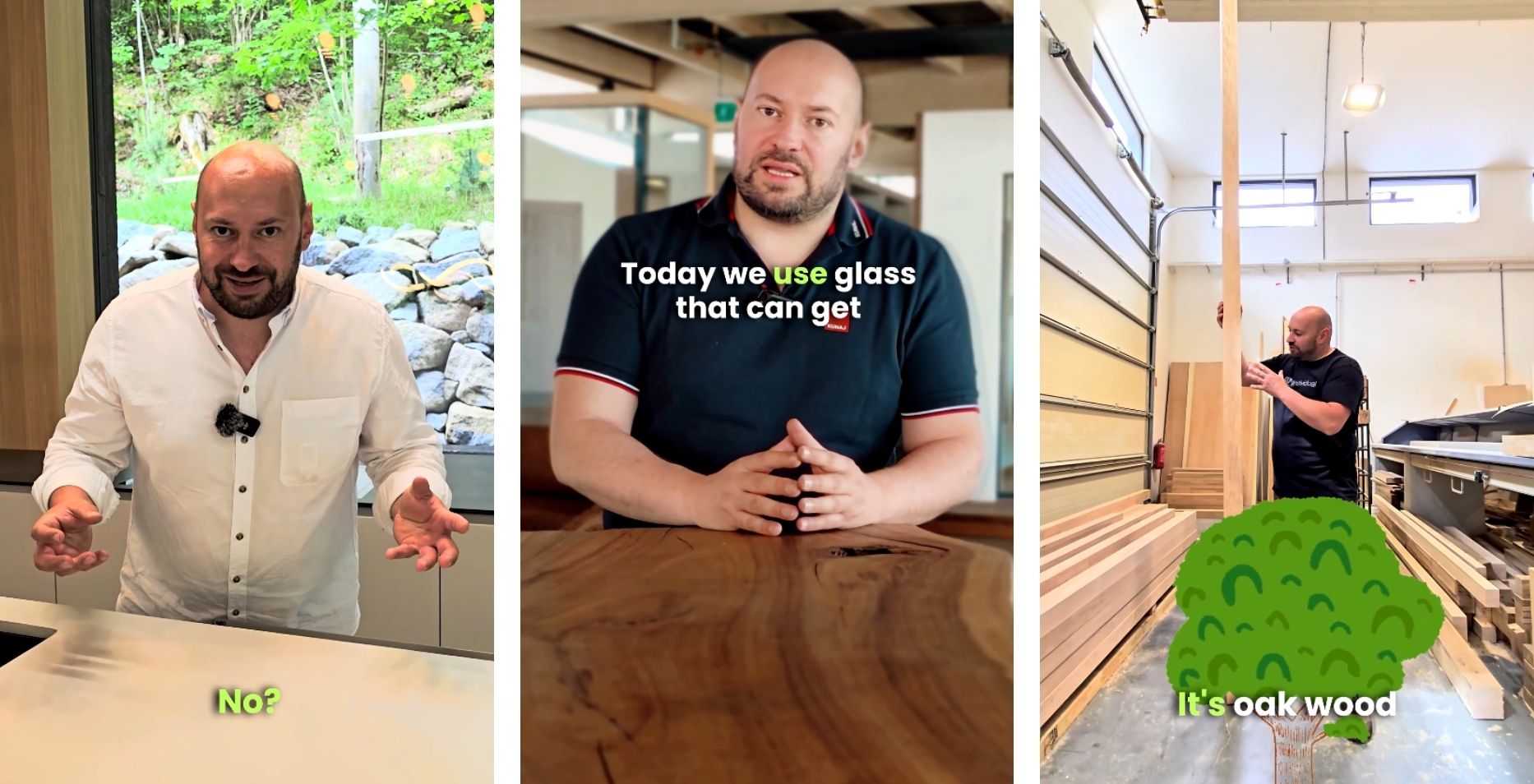Protipožiarne dvere sa do objektu umiestňujú podľa požiadavky architekta a podľa platných noriem. Každé dvere musia byť označené štítkom, na ktorom nájdete kód požiarnej odolnosti. Z neho sa dajú vyčítať základné parametre dvier, napríklad EW-30 D3-C. Sú to drevené dvere obmedzujúce šíreniu požiaru s protipožiarnou odolnosťou 30 minút a sú vybavené samozatváračom.

Dôležitým prvkom protipožiarnych dverí je materiál z ktorého sú dvere vyrobené. Dvere s označením D3 sú dvere drevené, D2 sú dvere zhotovené z horľavých aj nehorľavých materiálov a D1 sú oceľové dvere a teda dvere výlučne z nehorľavých materiálov. Pokiaľ máte v projekte uvedené, že máte použiť protipožiarny uzáver EW30 D3-C, môžete použiť drevené protipožiarne dvere. Ak sú ale umiestnené na mieste, ktoré je frekventované alebo nadmerne fyzicky namáhané, môžete použiť dvere D1 (oceľové) s označením EW30 D1-C.Vďaka tomu, že dvere D1 spĺňajú parametre dvier D3 môžu byť takýmto spôsobom zamenené. Nie je to však možné naopak. Aj keď dvere spĺňajú 30 minútovú požiarnu odolnosť, nemajú vlastnosti dvier oceľových. Pri kolaudácií Vám takúto zámenu neuznajú.

Protipožiarne dvere Kunaj
Všetky protipožiarne dvere v našej ponuke sú certifikované a riadne testované skúšobným ústavom. Montáž dverí je certifikovaná buď do oceľovej zárubne alebo do drevenej zárubne. V prípade oceľovej zárubne a za podmienky že je táto namontovaná zabetónovaním, je možné osádzať protipožiarne dvere aj do takejto pôvodne osadenej zárubne. Technický stav zárubne musí ale skontrolovať technik pri zameraní.
Drevené zárubne máme certifikované s montážou na protipožiarnu penu a to aj v norme EW45 alebo EI45. V protipožiarnych dverách musí byť osadená kľučka, ktorá rovnako spĺňa normy pre použitie v takýchto priestoroch. My používame nerezové kľučky ktoré sú na tento účel certifikované.
Ďalšou dôležitou vecou sú samozatvárače. Ich osadenie je v prípade protipožiarnych dverí zo zákona povinné. Napríklad na spoločných chodbách, pivničných priestoroch, schodiskových dverách atď. Tieto môžu byť nahradené napríklad EPS systémom, alebo motorickým zatváraním. Podľa váhy dverného krídla sa potom vyberá typ samozatvárača ktorý sa k dverám použije. Záleží na sile prítlaku a rýchlosti zatvárania. V prípade že máte dvojkrídlové protipožiarne dvere je nutné k týmto dverám namontovať aj koordinátor zatvárania, ktorý zabezpečí že sa najprv zavrie pasívne krídlo a až následne aktívne na ktorom je osadený zámok a kľučka. Ak by nebol koordinátor osadený mohlo by sa stať, že sa dvere zavrú v opačnom poradí a tým pádom by sa nezavreli správne a nespĺňali by protipožiarne vlastnosti.
Existuje však výnimka, kedy na protipožiarnych dverách nemusí byť samozatvárač, a to je v prípade vstupných dvier do bytu. Tie bývajú zväčša z chodbovej strany opatrené guľou a v prípade že by mali samozatvárač vznikol by problém častého zabuchnutia dvier a vymknutia sa na chodbe.

Dizajn protipožiarnych dverí
Protipožiarne dvere môžu byť vyrobené z rôznych materiálov a v rôznych prevedeniach. Častokrát Vás na protipožiarne vlastnosti upozorní len samozatvárač osadený na dverách, o ktorých by ste ani nepovedali že sú alebo musia byť požiarne. Ako sme už spomínali dvere môžu byť drevené, oceľové, hliníkové, dokonca aj plastové. Naša firma ponúka hlavne drevené protipožiarne dvere. Tieto vyrábame v normách EW a EI a v 30 a 45 minútovej požiarnej odolnosti. Na Váš projekt vieme dodať aj oceľové protipožiarne dvere, no tie už nevyrábame priamo u nás.

Všetky dvere, ktoré vyrábame vo forme Kunaj, vyrábame buď ako laminátové alebo dyhované. Osadené môžu byť buď do drevenej alebo oceľovej zárubne. Certifikované máme aj rôzne atypické a nadrozmerné dvere, ktoré môžu byť falcové alebo bezfalcové. Samozrejme môžu byť tieto dvere presklené, či už celé alebo rôzne pásy skla atď. Sklo musí byť ale tak isto protipožiarne s certifikáciou.
Protipožiarne dvere môžeme použiť aj ako už spomínané vstupné dvere do bytu kde v nich môže byť zabudované kukátko. Toto nemá vplyv na požiarne vlastnosti dvier. Ďalším príkladom môžu byť aj hotelové dvere ktoré môžu byť vybavené skrytým samozatváračom (zabudovaným priamo v krídle a zárubni, ktoré nie je pri zavretých dverách vidno) ale napríklad aj padacím prahom (ktorý je tak isto skrytý v krídle) a kartovým systémom na odomykanie izieb.
Využitie požiarnych uzáverov je široké ale zároveň aj nutné, nakoľko normy a zákony nám udávajú kde musia byť takéto konštrukcie použité. Netreba sa toho však báť. Aj protipožiarne dvere môžu byť pekné a dizajnové, a ich použitie si vo Vašom dome alebo objekte ani nevšimnete.

Vysvetlivky k požiarnym uzáverom:
EI - brániace šíreniu požiaru (predtým PB) - Sleduje sa u nich priamo povrchová teplota na strane odvrátenej od požiaru. Tieto prvky splňujú prísnejšie požiadavky na požiarnu bezpečnosť a preto môžu byť použité aj tam, kde sú požadované uzávery EW. Inštalujú sa spravidla pri vstupoch do chránených únikových ciest.
EW - obmedzujúce šírenie požiaru (predtým PO) - Sleduje sa množstvo sálavého tepla, vyžarujúce z povrchu na strane odvrátenej od požiaru v určenej vzdialenosti.
S - dymotesné, proti prieniku dymu (predtým K)
C - požiarne uzávery s funkčným vybaveným zatváracím, samozatváracím alebo odblokovacím mechanizmom (predtým S)
Protipožiarne uzávery sa podľa bodu požiarnej odolnosti zaraďujú do stupnice 15, 30, 45, 60 a 90 minút na základe prevedených skúšok
Druh použitej konštrukcie z hľadiska horľavosti a spôsobu zabudovania použitých stavebných hmôt sa vyjadruje písomnou značkou D3 (drevené), D2 (z horľavých a nehorľavých materiálov), D1 (oceľové)
































)%20(1).png)


































































